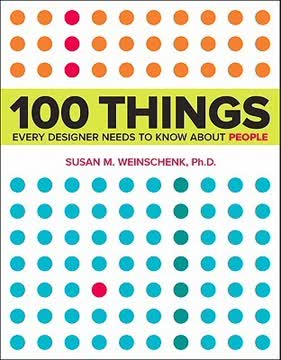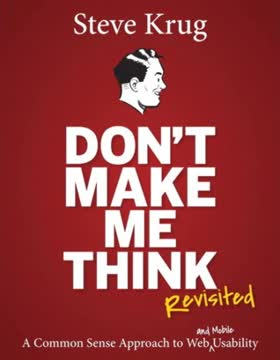Key Takeaways
1. Success in Design: 15% Technical Skills, 85% Interpersonal Skills
"I believe that if you want to succeed in your career as a graphic designer, you need to focus time and energy into developing your interpersonal skills."
Interpersonal skills are crucial. While technical design skills are important, they only account for about 15% of your success in the graphic design industry. The remaining 85% comes from your ability to communicate effectively, work well with others, and manage client relationships.
Key interpersonal skills for designers:
- Clear communication
- Active listening
- Empathy and emotional intelligence
- Conflict resolution
- Teamwork and collaboration
- Client management
Developing these skills will set you apart from other designers and lead to more opportunities, better client relationships, and increased success in your career. Focus on improving your ability to express ideas, lead people, and generate enthusiasm in others. Remember, even the best design work can be overshadowed by poor interpersonal skills.
2. Exceed Expectations: Go the Extra Mile in Every Project
"Every comp that a designer sends to a client should be as polished and finished as humanly possible."
Always deliver more than expected. Going above and beyond in your work not only impresses clients but also helps build long-lasting relationships and generates referrals. This approach applies to every aspect of your work, from initial concepts to final deliverables.
Ways to exceed expectations:
- Provide more design options than requested
- Add unexpected features or enhancements
- Deliver ahead of schedule
- Include thoughtful extras (e.g., mockups, additional assets)
- Anticipate and solve potential problems before they arise
By consistently over-delivering, you build trust and credibility with clients, increasing the likelihood of repeat business and positive word-of-mouth referrals. Remember, it's not just about meeting the bare minimum requirements, but about creating an exceptional experience for your clients throughout the entire project.
3. Collaborate and Communicate: Design is a Team Sport
"The best designers swallow their pride and recognize that their ideas aren't always the best, and they are willing to collaborate with others to create great design work, leaving bad design lost in space where it belongs."
Embrace collaboration and feedback. Design is not a solitary pursuit, but a team effort that benefits from diverse perspectives and skills. Effective collaboration and communication are essential for producing the best possible work and maintaining positive relationships with clients and colleagues.
Key collaboration strategies:
- Actively seek feedback from team members and clients
- Be open to constructive criticism and alternative ideas
- Communicate clearly and frequently throughout the project
- Use project management tools to keep everyone informed and aligned
- Recognize and appreciate the contributions of others
Remember that brainstorming sessions often produce 90% bad ideas, but that last 10% can lead to true greatness. By fostering a collaborative environment and maintaining open lines of communication, you'll create better designs and build stronger professional relationships.
4. Client Management: Understand Their Needs and Expectations
"Clients buy confidence. People buy trust. People buy relationships. People buy stress relief. People buy good deals."
Focus on client needs, not just design. Understanding and addressing your clients' underlying motivations is crucial for building successful relationships and delivering satisfying results. Clients often care more about achieving their business goals and feeling confident in your ability to deliver than they do about specific design elements.
Key aspects of effective client management:
- Listen actively to understand their true needs and concerns
- Communicate clearly and regularly throughout the project
- Manage expectations by setting realistic timelines and deliverables
- Provide education and guidance when necessary
- Build trust by consistently delivering on your promises
Remember that clients are looking for more than just good design; they want a partner who can provide solutions to their problems and alleviate their stress. By focusing on these underlying needs, you'll build stronger, longer-lasting client relationships.
5. Pricing and Business Acumen: Know Your Worth and Costs
"How can you know how much to charge if you don't know how much you cost?"
Understand your costs and value. Pricing your work correctly is essential for maintaining a sustainable business and ensuring you're fairly compensated for your skills and time. This requires a clear understanding of your costs, the value you provide to clients, and the market rates for your services.
Key considerations for pricing:
- Calculate your hourly burn rate (total annual costs ÷ annual billable hours)
- Factor in profit margins and business growth goals
- Consider the project's value to the client, not just your time
- Use different pricing structures for different situations (e.g., fixed-bid, hourly, retainer)
- Be prepared to explain and justify your pricing to clients
Remember that underpricing your work can lead to burnout and resentment, while overpricing can cost you opportunities. Strive for a balance that reflects your true value and allows you to build a sustainable business.
6. Documentation and Contracts: Protect Yourself and Your Work
"Whatever you do, never, ever do undocumented work...never, never, never."
Always document agreements and work. Proper documentation and contracts are essential for protecting yourself, your work, and your client relationships. Clear, written agreements help prevent misunderstandings, scope creep, and potential legal issues.
Key documentation practices:
- Use detailed proposals and contracts for every project
- Clearly define project scope, deliverables, and timelines
- Include terms and conditions that protect your interests
- Document all client communications and approvals
- Keep thorough records of time spent and work completed
Remember that even verbal agreements should be followed up with written confirmation. This not only protects you legally but also demonstrates professionalism and attention to detail, which can enhance your reputation with clients.
7. Continuous Improvement: Learn, Adapt, and Grow Your Skills
"Do what you love; the money will follow."
Never stop learning and improving. The design industry is constantly evolving, and successful designers must be committed to continuous learning and adaptation. This applies not only to technical skills but also to business acumen, interpersonal skills, and industry knowledge.
Strategies for continuous improvement:
- Stay updated on industry trends and new technologies
- Seek out challenging projects that push your skills
- Invest in courses, workshops, and conferences
- Learn from both successes and failures
- Develop a growth mindset that embraces challenges
Remember that your passion for design and commitment to improvement will drive your success more than any single skill or project. By continually investing in yourself and your craft, you'll stay relevant, increase your value to clients, and find greater satisfaction in your work.
Last updated:
FAQ
What's Burn Your Portfolio about?
- Real-World Skills Focus: Burn Your Portfolio by Michael Janda emphasizes the importance of interpersonal skills, teamwork, and business acumen over just technical design skills for success in graphic design.
- Beyond Design School: The book aims to fill the gaps left by traditional design education, offering practical advice for a successful career in the creative industry.
- Personal Experiences: Janda shares anecdotes from his career, illustrating principles with his journey from a prepress coordinator to a successful agency owner.
Why should I read Burn Your Portfolio?
- Practical Advice: The book provides actionable advice that can be immediately applied in your career, based on Janda’s real-world experiences.
- Avoid Common Pitfalls: Learn strategies to navigate client relationships and project management effectively, avoiding common mistakes designers make.
- Career Enhancement: Whether starting out or advancing, the lessons can help develop skills necessary to thrive in the competitive design industry.
What are the key takeaways of Burn Your Portfolio?
- Interpersonal Skills Matter: Janda highlights that strong interpersonal skills are crucial for building relationships with clients and colleagues.
- Exceed Expectations: Going the extra mile is essential for long-term success and client loyalty.
- Importance of Feedback: Embracing constructive criticism is vital for growth and improvement in design work.
What are the best quotes from Burn Your Portfolio and what do they mean?
- "You are responsible for your own time.": Emphasizes time management and personal accountability in a designer's career.
- "Gripes go up, not down.": Highlights addressing concerns with superiors to foster a positive work environment.
- "It is never too late for a better idea.": Encourages continuous improvement and openness to new ideas throughout a project.
How does Michael Janda suggest managing client relationships in Burn Your Portfolio?
- Regular Updates: Providing friendly updates reassures clients and maintains their confidence in your abilities.
- Avoiding the W.W.W.: Clear communication prevents clients from feeling like they are Waiting, Worrying, or Wondering about their projects.
- Building Trust: Exceeding client expectations and fostering a sense of partnership is crucial for long-term success.
What specific methods does Janda recommend for improving client relationships in Burn Your Portfolio?
- Be Nice to Everyone: Treat everyone with kindness, as future opportunities may arise from unexpected places.
- Timely Communication: Respond quickly to emails and keep clients updated to build trust and rapport.
- Use the Ultimate Email Formula: A structured approach to writing effective emails ensures clear communication and fosters positive relationships.
How does Janda suggest handling difficult clients in Burn Your Portfolio?
- Identify Red Flags: Be aware of warning signs indicating a potentially problematic client, such as financial instability.
- Set Clear Expectations: A detailed scope of work in proposals helps avoid misunderstandings.
- Communicate Effectively: Maintain open lines of communication and follow up on discussions with written confirmations.
What does Janda mean by "OCD Is an Attribute" in Burn Your Portfolio?
- Attention to Detail: Obsessing over details is crucial for producing high-quality designs.
- Proofing Work: Thorough proofreading is essential to avoid mistakes that can undermine credibility.
- Quality Over Quantity: The difference between good and great design lies in meticulousness and attention to detail.
What is the significance of the “Next Worry Date” in Burn Your Portfolio?
- Financial Awareness: Helps business owners understand when they might run out of cash, encouraging proactive financial management.
- Cash Flow Management: Informs decisions about hiring, spending, and project management to prevent financial crises.
- Encourages Action: Prompts business owners to secure new projects or cut costs, maintaining financial health.
How does Janda recommend pricing projects in Burn Your Portfolio?
- Understanding Pricing Structures: Discusses various pricing models, each with pros and cons, crucial for setting fair prices.
- Value Over Cost: Pricing should reflect the value provided to the client, leading to more profitable projects.
- Avoiding Line-Item Pricing: Suggests presenting a package price to encompass the entire scope of work, avoiding client cherry-picking.
How can designers avoid burnout as discussed in Burn Your Portfolio?
- Delegate Tasks: Hire help for tasks that can be done by lower-cost employees, allowing focus on high-value work.
- Set Boundaries: Establish clear work hours and prioritize well-being to prevent burnout.
- Regular Breaks: Taking breaks and allowing time for rest is essential for maintaining creativity and productivity.
What is the “Shock and Awe” principle in Burn Your Portfolio?
- Exceeding Expectations: Involves going above and beyond what clients expect, creating a memorable experience.
- Delivering More Than Promised: Providing additional value can lead to referrals and repeat business.
- Creating a Lasting Impression: Differentiates designers from competitors and helps build a strong reputation in the industry.
Review Summary
Burn Your Portfolio receives mostly positive reviews, with an average rating of 4.16 out of 5. Readers appreciate the practical advice for designers, especially those starting their careers or running businesses. The book's easy-to-read format and humor are praised. However, some criticize its repetitiveness and questionable leadership advice. Many find it valuable for understanding the business side of design, while others feel it lacks depth or contains outdated information. Overall, it's recommended for aspiring designers and creative professionals, though opinions vary on its universal applicability.
Similar Books









Download PDF
Download EPUB
.epub digital book format is ideal for reading ebooks on phones, tablets, and e-readers.




